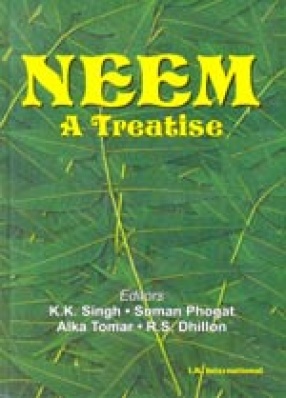Indian Forests – Soil, Water and Bio-environment Conservation – deals with the soil degradation in forests from a practicing forester’s viewpoint. Most past practices believed civil engineers’ gravity structures as the panacea for the problem. This book proceeds with a different premise – each reinforcement through root systems of vegetation best protects soil and conserves water. In elaborating this, it presents a simplified picture of Indian forest types and characteristics like soil formation, soil texture, soil organisms, etc. For the first time, it presents a cross profile of forest vegetation across the country connection it with prominent civil locations. Among various degrading factors, it deals with forest fires, over-grazing and different forms of soil erosion. For the first time, it flags faulty disposal of rainwater along hill roads as a menace to soil degradation. It classifies shifting cultivators in three categories – solely dependent, partially dependent and marginally dependent – probes the issue in depth and advocates, for the first time, differential treatment for them. A full chapter on landslides analyses causative factors – geomorphological, seismological, hydrological – in detail and provides the latest techniques to handle the problem. Another chapter on ameliorative soil and water conservation measures views the issue from a tree man’s point of view. Vegetative tools of foresters display their full potential here. This chapter, too, includes many firsts – jhora training in meandering streams, municipal watershed management and concept of infiltration belts for ground water recharging. Yet another chapter provides recent advances – root trainer nurseries, geo-textiles as tools of soil conservation and hydro seeding and hydro mulching as techniques of slope reclamation. The last chapter on peoples’ participation views the whole issue from a sociologist’s viewpoint. There are many firsts in this chapters, too, – vision of stakeholders; distributive justice and people’s participation; co-operative behaviour in view of effective communication, super ordinate goal, coalescing of groups, risk of initiator; criterion for selection of success indicators; monitoring of achievements through response indicators, habitat indicators, stress indicators, institutional process indicators, etc. A Must-read book for every conservationist.
Medicinal Tress: Distribution, Characteristics and Traditional Therapeutic Formulations
The 'Medicinal ...
$116.10
$129.00







There are no reviews yet.